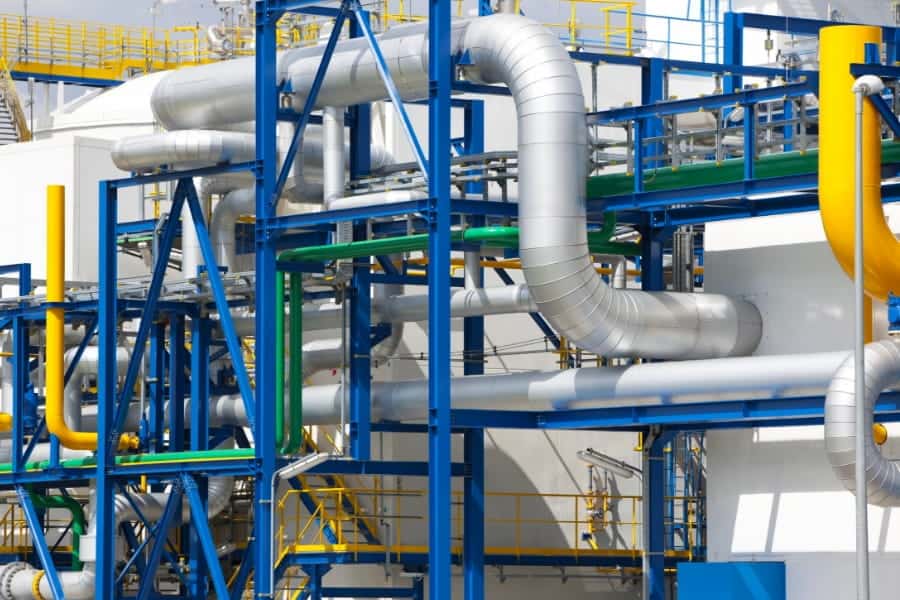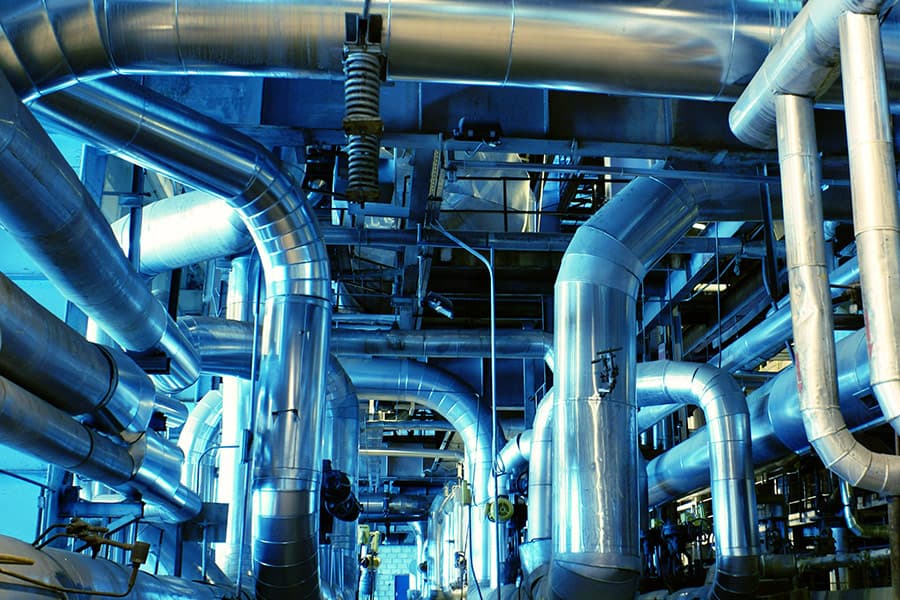

Optimiza digitalmente la planificación y ejecución de tus proyectos de construcción con 4D
When the deliverable is reliable pipe and vessel designs, there is no need to spend time doing something your software can do for you. AutoPIPE is an analysis and design application used to calculate piping stresses, loads, and deflections under static and dynamic load conditions. With extensive interoperability across other industry applications as well as time-saving features like the new support optimizer, AutoPIPE helps ensure quality, cost-effective designs, and a smooth workflow for engineers who use it.
Save time with an easy-to-use application
Easily create and modify pipe stress models by using the object-based OpenGL graphical user interface. You can simply point and click to insert, modify, or delete components for instant visual updates and modify parameters across a range of points with just one command. Tracking changes or making modifications can be done in a snap to help save time and eliminate otherwise cumbersome tasks.
Perform advanced analysis and design
Perform design and analysis for buried pipelines, fluid transients, wave loading, and FRP/GRP or plastic pipe and avoid piping failures and costly shutdowns by evaluating your design under extreme loading conditions like earthquakes. With AutoPIPE’s 3D hot clash detection you can eliminate errors up-front and perform ‘what-if’ analysis to quickly evaluate various design scenarios.
Streamline multi-discipline workflows
Integrate piping and structural analysis and design with the ability to transfer pipe support loads and import complete structures to and from other applications. AutoPIPE interoperates with applications like STAAD.Pro, SACS, OpenPlant, and CAESAR, so you can save design time and streamline the workflow when working across various teams.
Optimize pipe supports
Provide the most optimized pipe support design quickly using the latest AI machine learning technology. When a piping system must be designed to withstand various stresses, it’s critical to assess loading points and support them adequately, yet keep costs to a minimum. The new support optimizer feature allows you to create thousands of design alternatives and compare them as they become available. Then make iterations until the best outcome is achieved.
Create graphical results and reports
Produce customized reports in various formats from an open-sourced, optimized SQLite database and eliminate tedious reviews with color-coded results and pop-up windows that help identify and investigate critical issues.
What are you waiting for? Buy AutoPIPE today
Technical Capabilities
Modeling
- Single line, wire-frame, and solid render drawing modes
- CAD style single, double, or quad view ports
- Vertical axis (Y or Z) can be switched on the fly
- On-screen distance calculator for accurate coordinate checks
- Built-in valve actuator for more accurate valve modeling
- Segment management: reverse, split, join, and re-order segments
- CAD line class and line numbers
- Connectivity checker to avoid model disconnects
- English, metric, SI, and user-defined units
- Extensive ANSI/ASME, DIN, EN, JIS, GD, GB, GOST, and GRP/FRP standard piping component and material libraries
- Structural steel modeling using structural databases for 17 countries
- Expansion joint modeling with tie rod assemblies
- Model import from AutoPLANT, PlantSpace, OpenPlant, MicroStation, Excel, AutoCAD, Intergraph PDS, SmartPlant, Aveva PDMS, CADWORX, SolidWorks, Inventor, Plant 3D, CATIA, and PlantFLOW
- Automatic stress isometric generation in DXF, DWG, or DGN formats with engineers mark-ups
- PIPELINK bi-directional integration with STAAD.Pro and SACS
- Model geometry data export into AutoPLANT, MicroStation, and AutoCAD
- Automated ring main wizard
- Automatic ASCE soil calculator
Piping Codes
- ASME B31.1 support for multiple years, including B31.1, B31.4, and B31.8
- European Standard Metallic Industrial Piping (multiple years) EN13480
- Multiple years: B31.4, B31.8, B31.4 Offshore, B31.8 Offshore and CSA_Z662 Offshore codes
- DNV OS F101 offshore code
- Canadian CAN/CSA–Z662 (multiple years)
- British Standard BS 806, BS 7159 (GRP piping code)
- FRP ISO 14692
- ASME N755 HDPE Code Case
- Russian SNIP 2.05.06-85 Oil and Gas
- Swedish Piping Code (SPC) Method 2
- Norwegian Det Norske Veritas (DNV) and TBK 5-6
- Dutch Stoomwezen D1101
- Japanese KHK, MITI class 3, JSME NC1-PPC and General Fire Protection code
- French RCC-M and SNCT
Dynamic Analysis
- Time history dynamic analysis with ground motion
- Mode shapes, accelerations, and natural frequencies
- Harmonic load analysis
- Uniform and MSRS response spectrum and shock spectra
- Multiple spectrum enveloping
- NRC spectra and code case N411 (PVRC) damping and spectra
- NUREG.CR-1677, CR-6441, and CR-6049 benchmarks
- Automatic mass discretization
- Missing mass and ZPA correction
Analysis
- ASME B31J calculations for improved SIF values
- Unlimited static analysis to examine different loading scenarios, including hot modulus for any combination of 100 thermal, 30 seismic, 10 wind, and 50 dynamic load cases
- Automatic generation of wind profiles per ASCE and UBC guidelines
- Wave loading and buoyancy for offshore applications
- Hydrotest analysis with locking spring hangers
- Linear and non-linear hydrotest analysis
- Fluid transient utilities for water and steam hammer plus relief valve load analysis
- Automatic spring hanger sizing from 27 manufacturers
- State-of-the-art nonlinear support gap, friction, yielding, and soil interaction with advanced features of seismic wave propagation, overburden and settlement loads, and stresses to ASCE, AWWA, and ASME
- Thermal stratification bowing analysis
- Seismic static and response spectra load generator to IBC, Euro, ASCE, Indian, Spanish, Mexican, and Chinese standards
- Ec/Eh ratio applied to expansion stresses for any piping code
- Integrated flange loading analysis per ASME VIII Div 1 and 2, ASME III App XI, and ANSI B16.5
- Nozzle flexibility analysis per API 650 App. P, ASME Class 1, WRC 297 and Biljaard methods
Input and Results
- Results saved to Microsoft Access MDB file for post-processing
- Automatic or user-defined load combinations grid
- Automated batch processing
- Maximum intermediate stresses
- Reference point for manufacturer equipment loading reports
- Rotating equipment calculations to API 610, NEMA and API 617, and user-defined standards
- Results can be filtered and sorted by stress, deflection, or load criteria
System Requirements
- Microsoft Windows 10 or 11 64 bit Professional
- 4GB Hard Drive and 4GB Memory recommended
- Any industry-standard video card that supports Open GL 3D graphics
- Recommended: Adobe Acrobat Reader 10.0 or higher


